This pork tenderloin, peas, wild garlic, asparagus and liquorice broth dish is one that brings fine dining straight onto your table. It is a refined yet easy to make dish that contains all the elements that you would find in a fine dining restaurant and that will please the eye as much as your taste-buds.


So, what exactly is good food?
Since I’ve started cooking and diving into stories from chefs, restaurant owners and food critics, this has been a question I very often ask myself. Before I started this blog my knowledge of good food was very limited. Learning how to cook in a family where cooking was a need rather than a pleasure, I never understood why technique is so important and I quite often thought I could make good food without following any rules. That made my skills stagnate for a while, and only now do I realise how much there is to learn about good food.
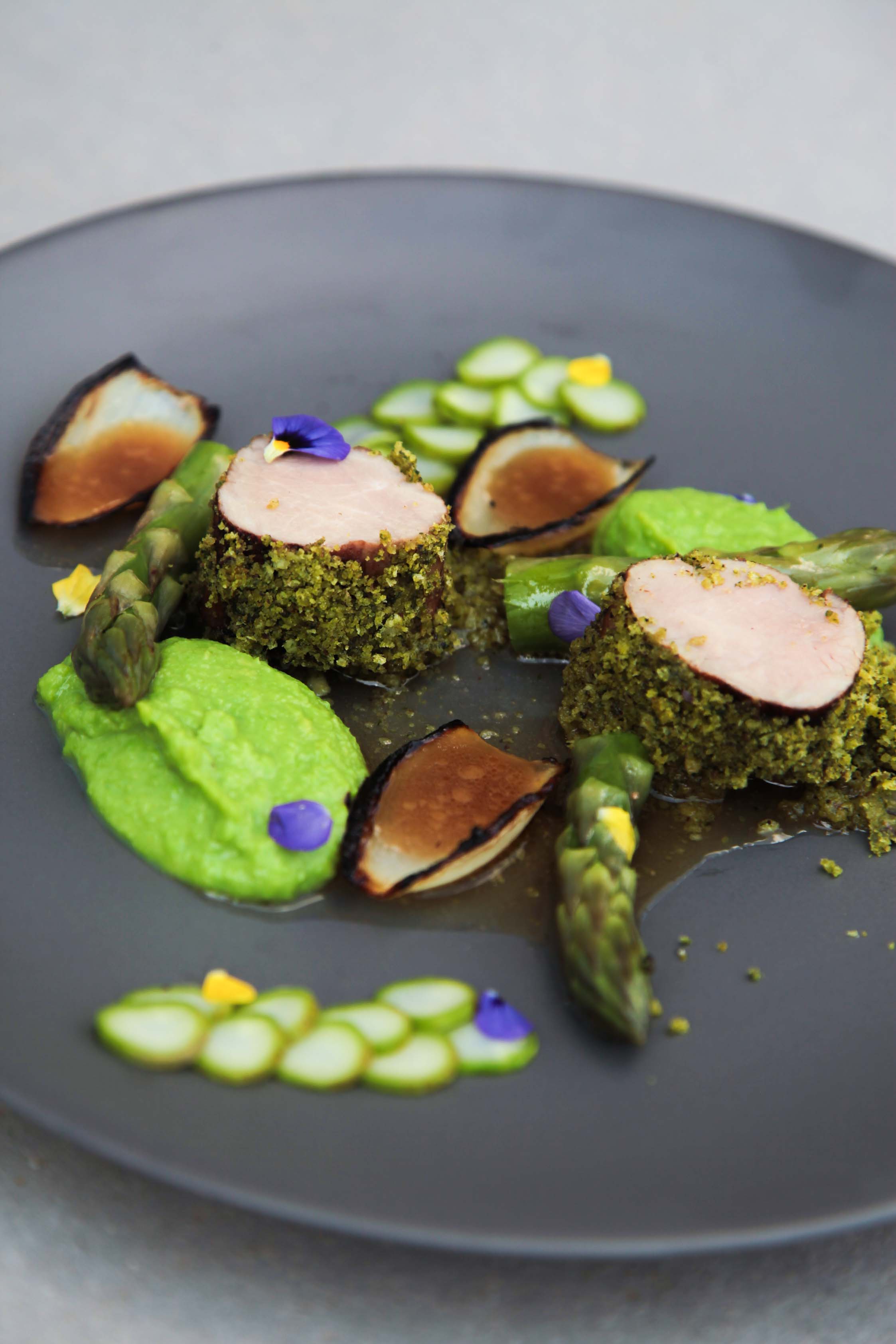

In my opinion, good food is
- Appreciating ingredients to the fullest. This means accepting that a steak is best cooked medium rare, as it stays juicy and soft. It means accepting that a pizza can sometimes be better topped with good quality mozzarella and s. Marzano tomatoes rather than loaded with ingredients of all sorts. Good food also means making a curry without throwing in all the Asian ingredients you find at the market.
- Understanding the flavours and texture changes of ingredients while cooking them. It means understanding what each ingredient adds to a certain dish, be it sweetness, acidity, earthy or floral notes. In scientific/culinary terms, this is called the flavour profile, and each ingredient is unique due to its chemical compound. Hence, every combination of ingredients is unique.
- Delicate and simple. We are instinctively drawn to intense flavours before starting to appreciate subtle ones. The intense flavours will trump those of every singular ingredient. Think about it like this: in front of you there is a pizza topped with tomato sauce, mozzarella, prosciutto and mushrooms. When you take a bite of it, you taste every individual ingredient with its specific flavours: the sweet acidity of tomatoes, the milky mozzarella, the saltiness of the prosciutto and earthy notes of the mushrooms. Adding hot sauce to your slice will neutralise all the other flavours due to its fiery note that will envelop your palate.


How to cook better food
You can spend a lifetime understanding the chemical compounds and transformations that happen when cooking food. However, this is my manifesto that sometimes you need to do things by the book in order to achieve great results. Pork tenderloin is one of the best cuts of meat out there – if cooked properly. It needs to be juicy, still slightly pink. If it’s overcooked, because it’s so lean, it becomes dry and hard. Same goes for asparagus. If you undercook it, it is hard and bitter. When overcooked it loses its bright green colour and lovely crunchy texture. If you are a passionate home-chef like me and wish to step up your cooking, you should invest in:
- A powerful blender with variable speeds so that curries and other sauces will turn out silky smooth
- A mortar and pestle to make your own fragrant spice blends
- A food processor to help you with the chopping
- A sous-vide machine (immersion circulator). Trust me, it changes your life!
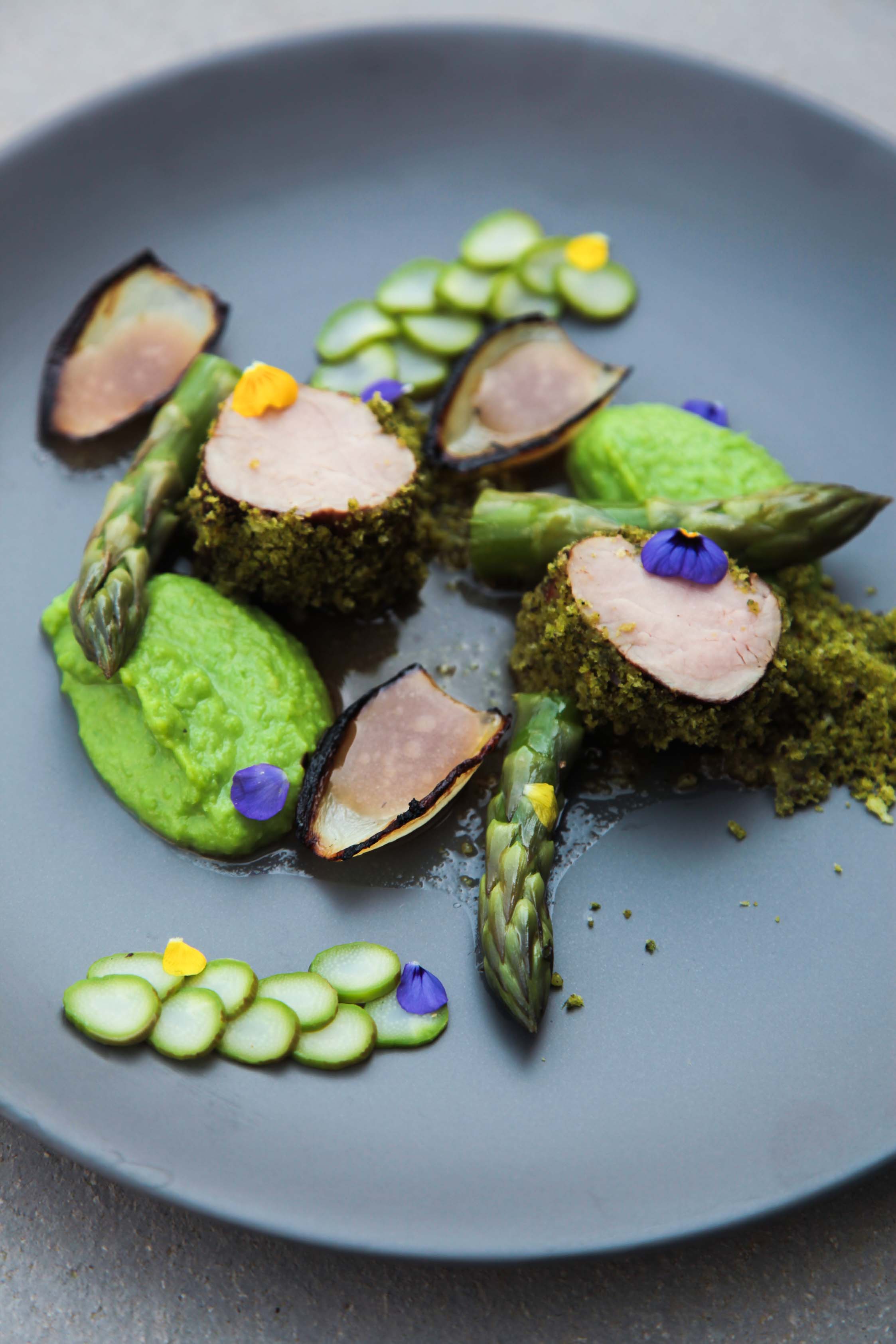

The recipe for pork tenderloin, peas, wild garlic, asparagus and liquorice broth
This pork tenderloin, peas, wild garlic, asparagus and liquorice broth dish is one that brings fine dining straight onto your table. It is a refined yet easy to make dish that contains all the elements that you would find in a fine dining restaurant and that will please the eye as much as your taste-buds.
Pat the tenderloin dry, season with the salt and sugar, then add it to a zip-lock bag or vacuum pack it. Cook it sous vide at 58ºC for 90 minutes. Once cooked, remove it from the bag, pat it dry and sear it for no longer than 30 seconds on each side in a sizzling hot pan, until it’s nicely browned all around the surface.
If you don’t own a sous-vide immersion circulator, you can simply pat the tenderloin dry. Add butter to a non-stick, ovenproof pan or cast iron skillet. When sizzling hot, add the pork tenderloin and sear it on all sides, then finish it in the oven at 200ºC for 10-15 minutes. Let it rest for 5 minutes before serving it.
Simply add all the ingredients to a food processor and blitz until you obtain a crumble.
In a small sauce pan, sauté the garlic and shallots in butter together with the star anise and liquorice, until they are soft (on low heat for about 15 minutes). Add the stock, wine, sugar and salt to taste (keeping in mind the stock will get saltier as it will reduce), then simmer on medium-low heat until it is reduced by almost half. Strain the broth, remove the star anise and liquorice, then set the garlic and shallots aside.
Preheat the oven at 180ºC. Heat a cast iron skillet (or an ovenproof non-stick pan) and melt the butter. Add the onion halves wide side down and let them char on medium heat for about 20 minutes (until the sides are black). Place them in the oven for 5-10 minutes, until they soften a little more.
Boil the peas in salted water for about five minutes, them remove from the water and blend them with the garlic and shallots from the broth, the double cream and salt to taste.
Boil the asparagus for four minutes in salted water. Blanch in ice-cold water to stop it from cooking any further. Right before serving it, simply add it to a non-stick pan with a little butter and slowly heat the asparagus spears.
Finally, plate the dish up and enjoy!
Until next time,
Ioana


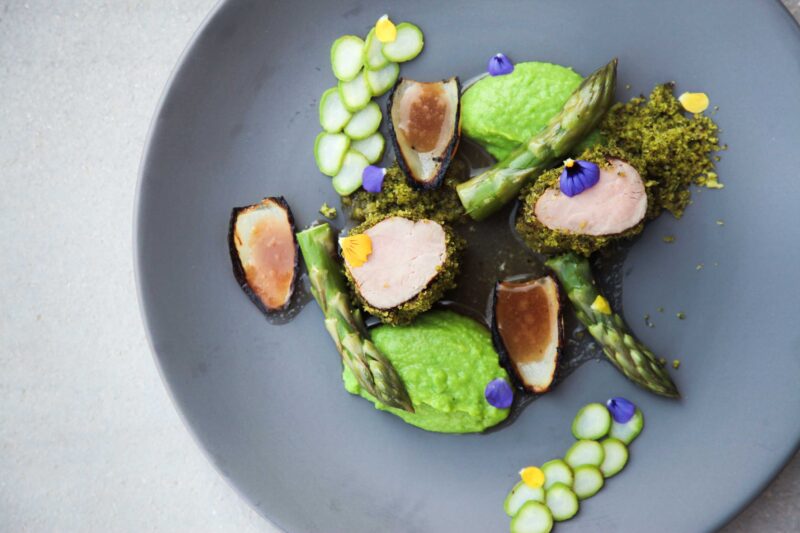
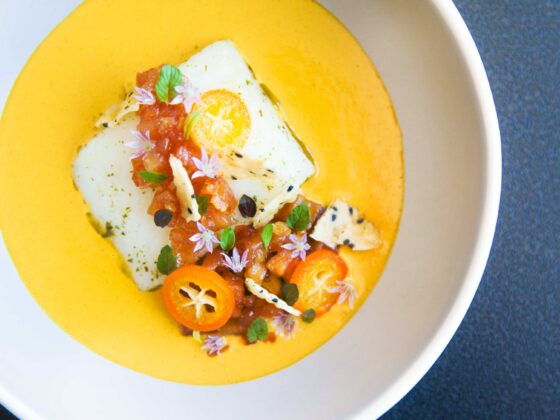
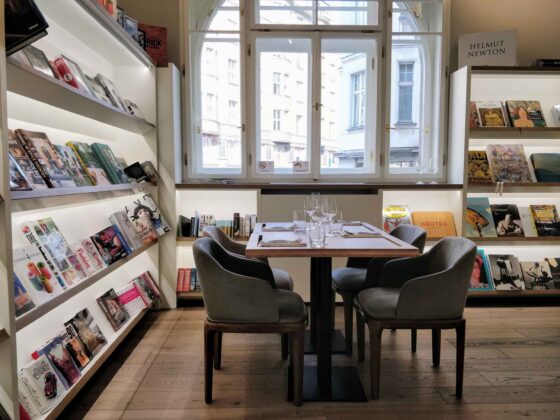
0 comments